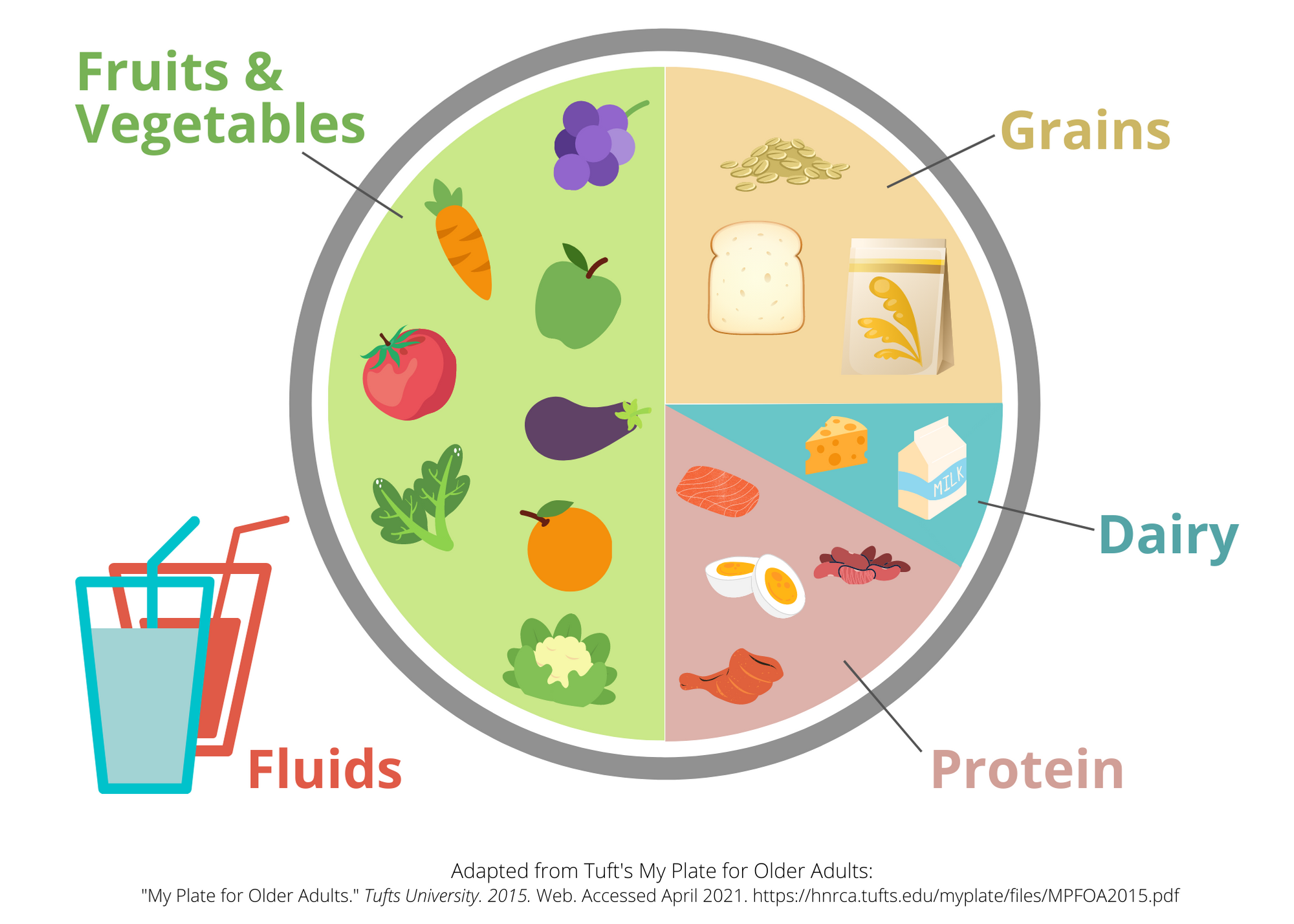Eating Healthy for Seniors
Eating Healthy for Seniors
Eating healthy and making smart choices for your health is very important at your age. Healthy food provides the nutrients, vitamins, and minerals that are best for your mind and body. Eating well can help lower your risk for chronic disease, such as diabetes and heart disease. Good nutrition can also help those already living with a chronic disease manage their condition and reduce complications.
Create a Healthy Plate
Use these tips for creating a healthy plate to maintain healthy eating habits and reduce your risk for diet-related disease!
- Make 1/2 of your plate fruits and vegetables. Choose a variety of colorful fresh, frozen, or canned fruits and vegetables without added sugars or salt.
- Make 1/4 of your plate grains. Choose whole grains, such as brown rice, whole wheat bread, quinoa, oats or whole wheat pasta.
- Make 1/4 of your plate lean proteins. Choose lean proteins such as fish, poultry, tofu, nuts or beans. Limit the amount of red meat you eat and avoid processed meats, such as deli meats, bacon, or hot dogs.
- Choose low-fat or fat free dairy options, such as milk or yogurt, or fortified soy milk without added sugar to get your calcium, protein, and other nutrients.
- Make sure to drink plenty of fluids, such as water, with each meal. Avoid sugary drinks, such as soda, sports and energy drinks.

Resources:
– Check out Tuft’s MyPlate for Older Adults OR Play the MyPlate for Older Adults video.
– Click here to find out “How much do I need“?
– Click here to learn more about what makes a serving of fruits and vegetables
Eating the Rainbow
It can often be difficult to afford healthy food, especially if you are on a fixed income. Here are some tips and resources to help you stretch your budget.
View more V4V Gold Materials and Resources
Eating Well on a Budget
Information on how to maintain a healthy diet while on a budget.
Nutrition Challenges
Address different age-related nutritional challenges.
Other Food Programs
Find other tailored food resources just for you.
Program Information
Learn more information on the V4V Gold program.

